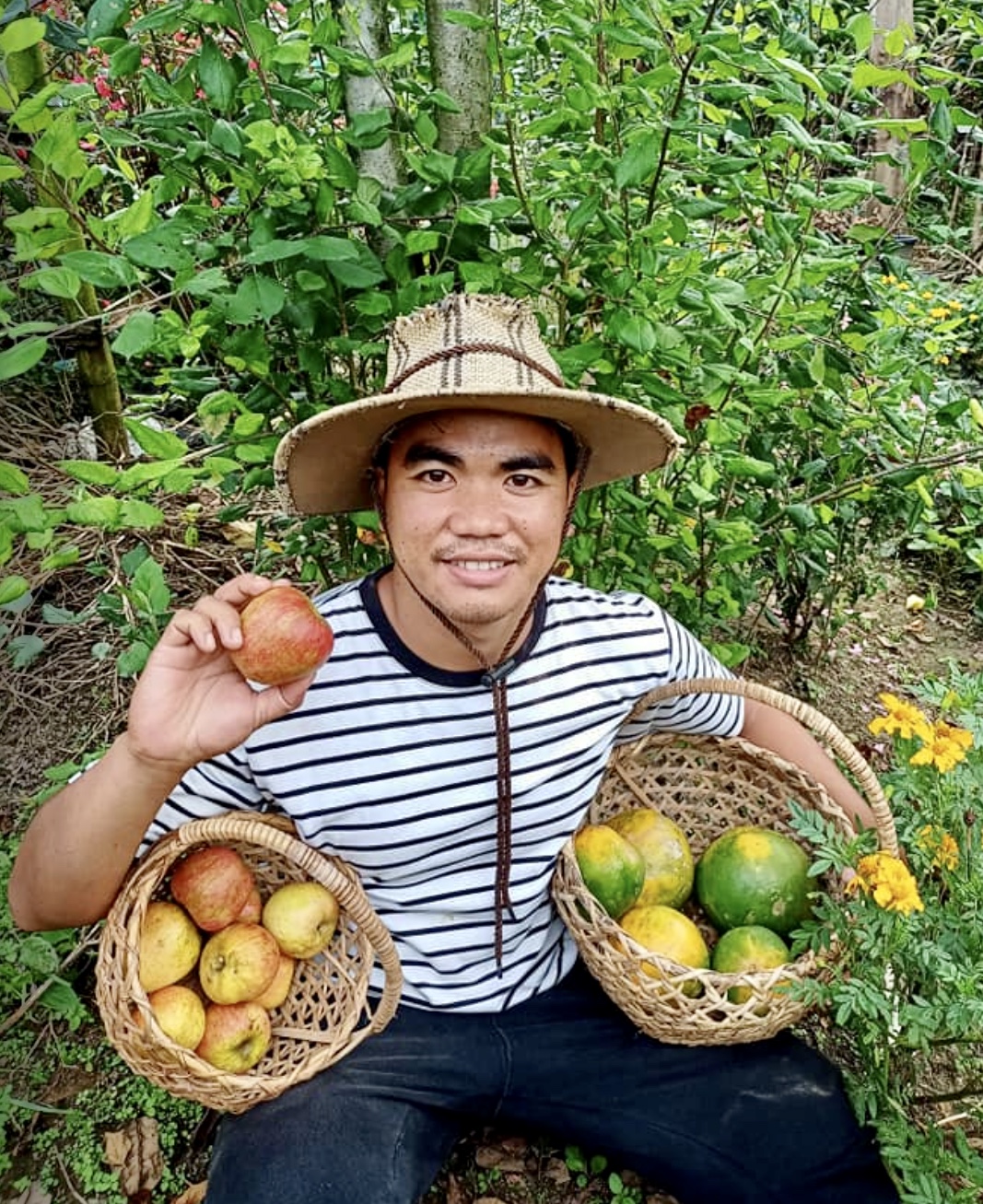Text by Henrylito D. Tacio
Photos courtesy of Benzone Kennedy F. Sepe
An apple a day keeps the doctor away, so goes a popular saying. To have a steady supply of fruits, the best thing to do is to plant apples right in your homeyard.
That’s what Benzone Kennedy Franes Sepe, 30, did. He planted apples at sitio Marawer, barangay Kapatagan in Digos City, Davao del Sur sometime in the late 2013. In the early months of 2018, he literally harvested the fruit of his labor.
“There was no difference between the apple I harvested from my farm to the apple I bought from the public market because the juiciness and crunchiness is still there,” said Sepe, a graduate of Agricultural Technology at Davao del Sur State College (DSSC).
He brought some of the apples to DSSC for “Brix” testing to measure the sugar content, an essential part of the quality analysis of an agricultural product. Results showed the apple grown by Benzone was much sweeter as it scored 17.5 degrees Brix, much higher to the 13 degrees of commercial apples. Quality of apples for export must meet the standard of at least 12 degrees, he pointed out.
Apples are most grown in temperate countries like the United States, Japan, and European countries. They tend to thrive in climates where it’s cold in the winter, moderate in the summer and has medium to high humidity rather than a hot and dry climate like the Philippines.
“I started planting apples out of sheer curiosity when I bought Fuji apples from the mall,” said Sepe, who’s now a fourth-year student taking up a Bachelor of Science in Agriculture major in Horticulture.
He was able to extract three seeds which he planted in a seashell. To his surprise, they grew. When the apple seedlings attained a height of five inches, he transferred them to seedling bags. After six months, he planted the young apple seedlings into the ground. Unfortunately, only one plant survived.
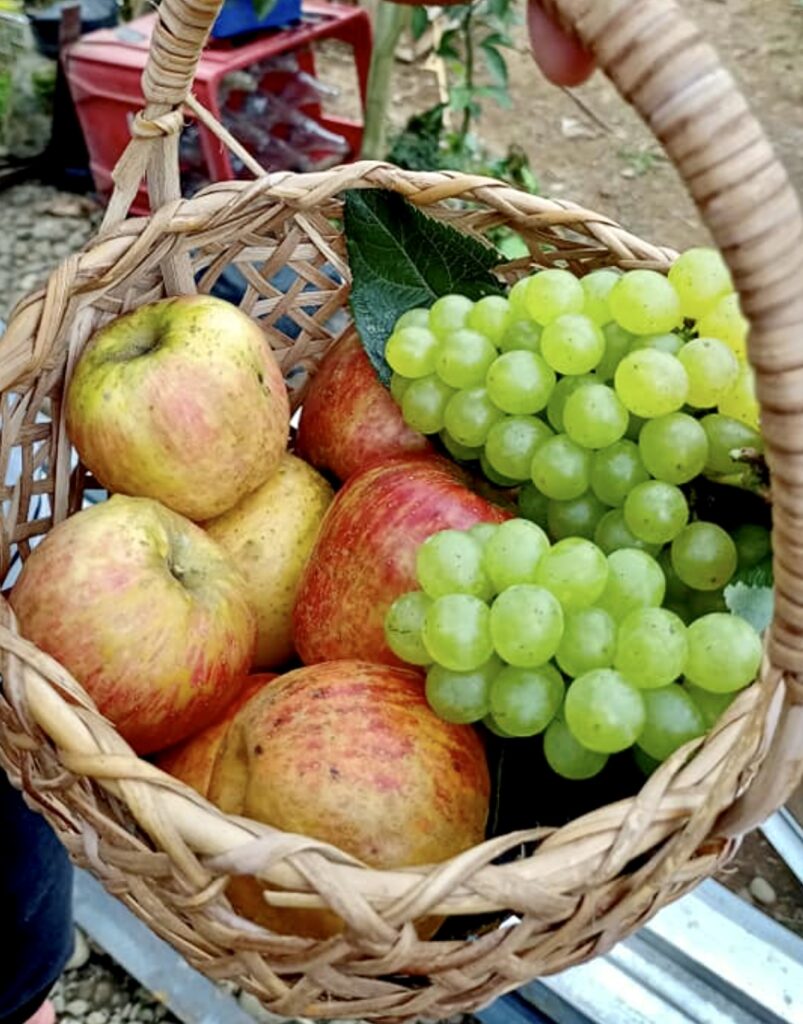
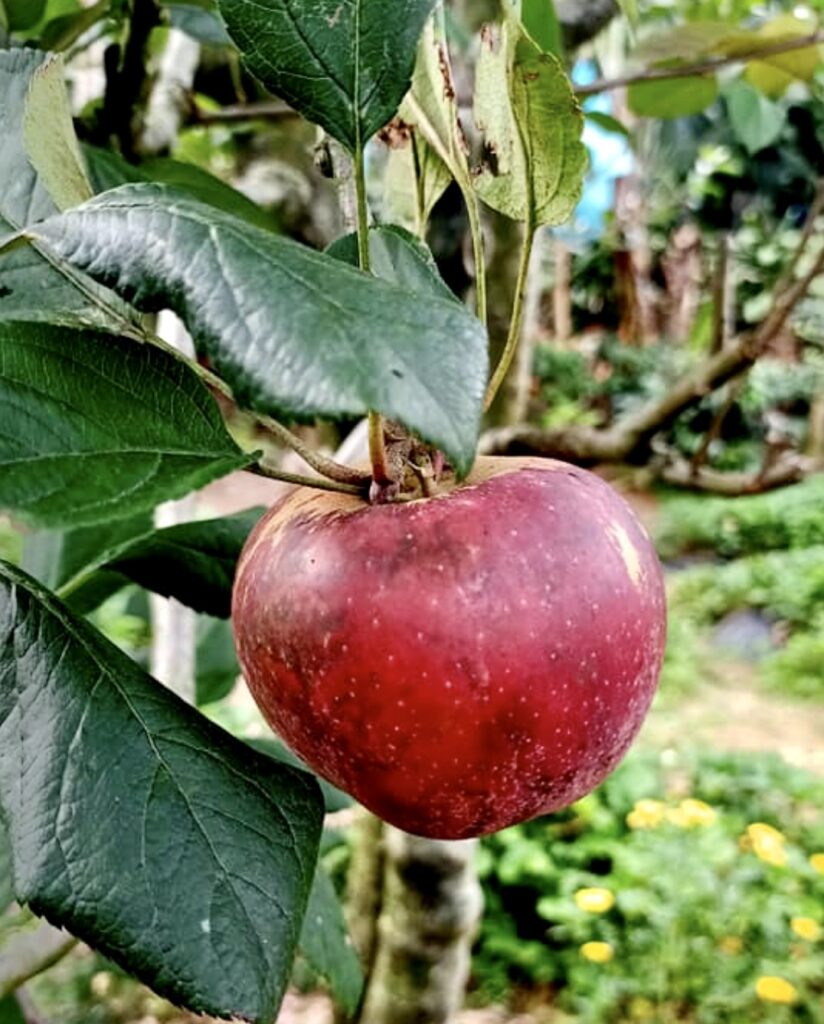
In early 2018, he observed flowers coming out from the tree. Three weeks later, he became excited when he saw the flowers turned into fruit buds. From the lone tree, he was able to harvest 32 ripe apples.
He admitted that his interest in planting apples was actually fired up when he visited South Korea for a two-month educational trip on farming. In one of the trips, he read an agricultural magazine where farmers are growing tropical fruits, despite the cold climate. With the right technique and technology, Korean farmers grow mangoes successfully.
“If they were able to grow our fruits, why not grow their fruits in our country,” Sepe thought.
Then, he remembered the apple he planted in his backyard way back home. “Why not produce apples in the Philippines?” he told himself.
“That started my eagerness to propagate apples. I also did some research through the internet and read articles about propagating apples,” he pointed out.
In one of his readings, he found out that apples require 7 to 12 degrees of cold weather, called dormancy. The apple tree needs at least 800 hours of temperatures below 45 degrees Fahrenheit in order to produce fruit.
“But since apples are a highly adaptive crop, I think they have adjusted to the cold weather of Kapatagan,” Sepe said. “Besides, in some parts of Africa, particularly Kenya, they are already producing apples and even exporting the fruits.”
In the highlands of Benguet, apples were also planted but the result is not as good as those in Kapatagan.
From one apple tree, the Kapatagan Apple Orchard – as it is now known – has about 330 trees. “I started planting apples in our home lot with an area of 640 square meters,” he said.
At least 30 apple trees are growing now in the homeyard. The 300 others are planted in front of their church and in a half-hectare land which he rents. He dreams of planting more as his contribution in reforesting Kapatagan, which is now denuded due to banana plantation and vegetable production.
Sepe raises most of his apple plants from seeds, which he marcotted, bud-grafted and grafted. When planted, seedlings grafted with a branch from a full-grown tree start bearing fruits in two to three years.
“If you are interested in growing apples from seeds, you have to plant as many as you can,” he stressed, adding that apple seeds have a very low germination rate aside from being attacked by fungus.
An apple grown from seeds is considered a new variety, according to him. That’s why he called the variety he grows as “Benzone Apple,” which he named after his own name.
Aside from Fuji, he also plants other varieties of apples: Golden Dorsett, Starking, Granny Smith, Gala, Redlove Odysso, and Russet to name a few.
Right now, the apples he harvests from his farm are only for family consumption. “By God’s grace, there is a good chance of supplying apples and other fruits in the local market in due time,” he said.
Growing apples in the tropics needs patience. In temperate countries, it takes five to seven months for the plants to bear fruits. But in Kapatagan, he waits only four months to start harvesting the fruits.
“It’s possible to harvest three times in a year and a half,” Sepe said. “In temperate countries, they can harvest once a year only because of the winter season.”
What bothers him most, however, are the pests that attack the apple trees. To control them, he applies integrated pest management (IPM), which includes making homemade natural pesticides and foliar sprays.
Despite the fact that he was able to grow apples in Kapatagan, he does not rest on his current success. “I still need more knowledge about growing apples,” he admitted. “There are other things I need to know.”
The Agricultural Training Institute of the Department of Agriculture has already accredited the Kapatagan Apple Orchard as a learning site for apple growing, the first in the country. Visitors who are interested in apple farming can come; entrance fee is P20 per person.
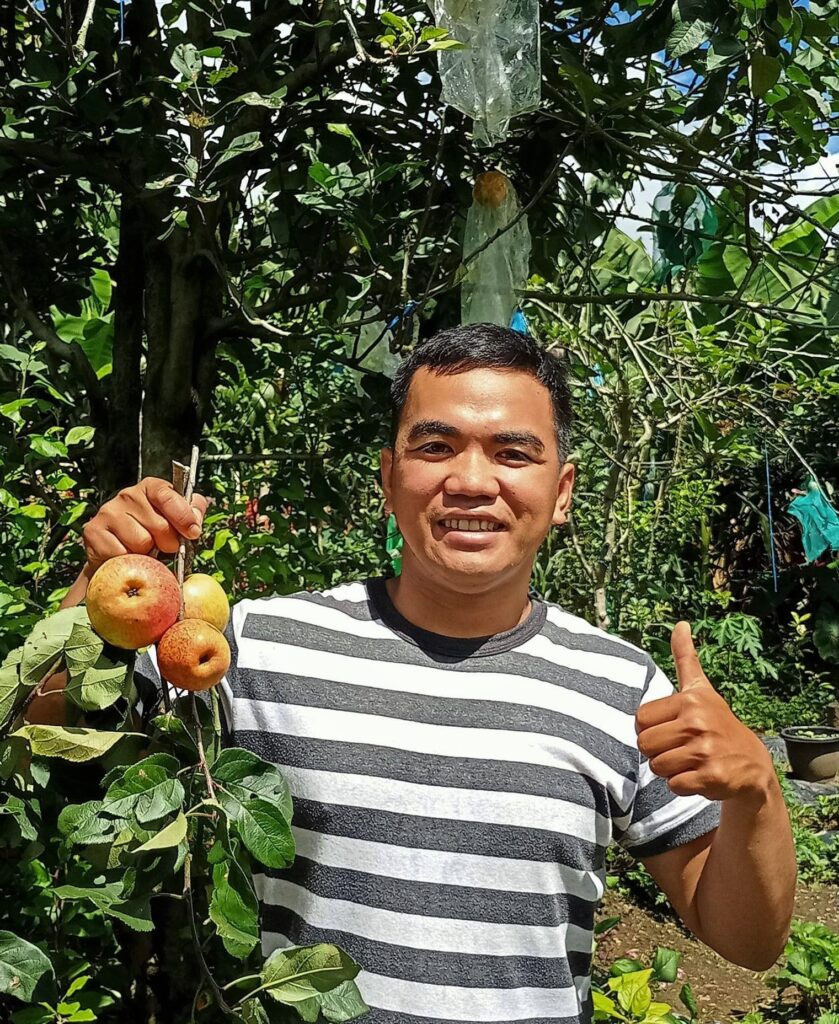
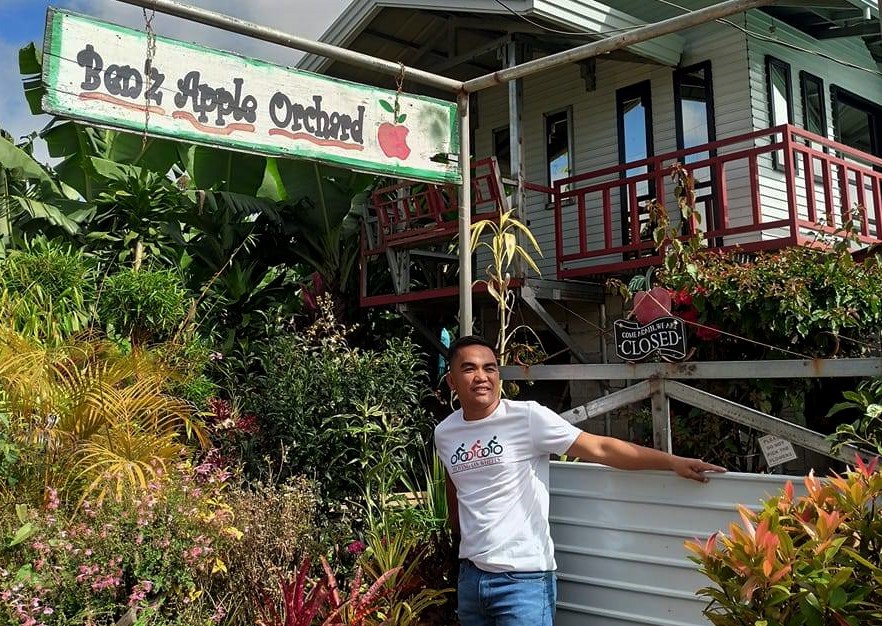
As the orchard is located in the rolling foothills of Mount Apo, where the climate is cool and suitable for producing exotic fruits, Sepe also plants atemoya, blackberry, blueberry, cherimoya, cherry, fig, grapes, guava, guyabano, Hass avocado, jaboticaba, jackfruit, kiwi, lime, mango, mulberry, olive, orange, peach, pear, persimmon, plum, pomegranate, raspberry, and strawberry. He likewise grows vegetables.
Sepe works alone in his farm. But in some instances, he hires part-time workers if ever he needs some help.
Although his childhood dream was to see an apple tree, he never thought of becoming a farmer just like his parents. “Farming is not my first love,” he admitted. “I really wanted to become a lawyer but because of financial problems, I wasn’t able to do so.”
Apple (scientific name: Malus domestica) is one of the healthiest fruits of all time. It is a low-calorie snack, high in both soluble and insoluble fiber. Nutrition experts claim one large apple has around 130 calories. It has no sodium or cholesterol – nutrients many want to expressly avoid.
In addition, one apple has 34 grams of carbohydrates, 25 grams of which come from the fruit’s natural sugars.
Lisa Sefcik, in an article, wrote: “One apple gives you 20% of your daily value (DV) of fiber. You also get 2% of your DV of vitamin A, iron and calcium, and 8% of your DV of vitamin C. Almost half of the fruit’s vitamin C content is within the skin, so it’s best to eat apples unpeeled. Apple skins are a valuable source of the fruit’s fiber and also contain pectin.”
Now, we know why Martin Luther said these words: “Even if I knew that tomorrow the world would go to pieces, I would still plant my apple tree.” – ###
Photos courtesy of Benzone Kennedy F. Sepe

